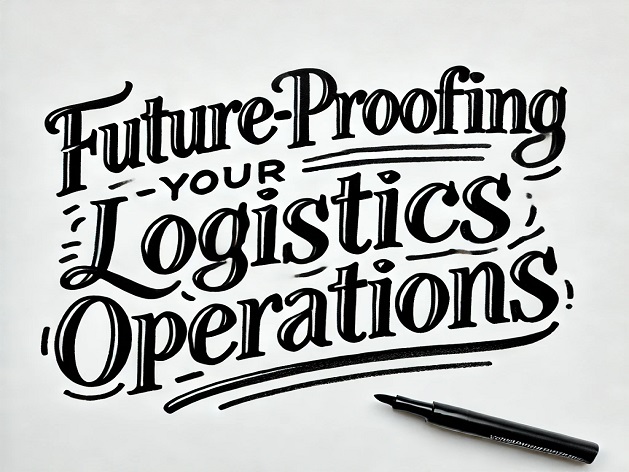In today’s competitive digital landscape, seamless omnichannel integration has become crucial for e-commerce businesses. Consumers demand flexibility, speed, and convenience in how they shop, whether online, in-store, or via mobile apps. As businesses expand across multiple platforms, the challenge lies in delivering a consistent, efficient, and integrated shopping experience. Here’s a guide to best practices for implementing omnichannel solutions in e-commerce fulfillment.
1. Centralized Inventory Management
One of the cornerstones of omnichannel fulfillment is a centralized inventory system that provides real-time visibility into stock levels across all channels. This is essential to avoid stockouts, overselling, and inefficient replenishment. By centralizing inventory, businesses can efficiently allocate products to the right fulfillment channels, be it online orders, in-store pickups, or same-day delivery.
Best Practices:
- Use of inventory management systems (IMS): Employ an advanced IMS that integrates with all sales channels.
- Real-time updates: Ensure real-time synchronization of inventory levels across platforms.
- Automated replenishment: Implement automatic stock level alerts to streamline the restocking process.
2. Integrated Order Management Systems (OMS)
An efficient Order Management System (OMS) is critical for omnichannel success. It should aggregate orders from multiple sales channels into a single platform, providing businesses with visibility into the entire order lifecycle—from order placement to fulfillment and returns. This simplifies order routing and ensures that the fastest, most cost-effective fulfillment method is chosen.
Best Practices:
- Channel integration: Your OMS should integrate seamlessly with your website, third-party marketplaces, and physical stores.
- Omnichannel fulfillment options: Offer multiple fulfillment methods, including ship-from-store, ship-to-store, and click-and-collect.
- Automated order routing: Use AI-driven tools to determine the optimal fulfillment location (e.g., nearest store, warehouse).
3. Customer-Centric Approach to Fulfillment
Modern consumers expect flexibility in how they receive their purchases. Offering a variety of fulfillment options, such as buy online, pick up in-store (BOPIS), curbside pickup, and same-day delivery, improves customer satisfaction and loyalty. Prioritizing these options can help businesses stand out from the competition.
Best Practices:
- Multiple fulfillment channels: Offer consumers various delivery and pickup options based on convenience, speed, and location.
- Personalized delivery windows: Use data analytics to predict customer preferences and allow personalized delivery times or locations.
- Unified customer experience: Ensure that customer experience, including returns and exchanges, is consistent across all touchpoints.
4. Advanced Warehouse and Fulfillment Technology
Efficient warehouse operations and fulfillment processes are critical for seamless omnichannel integration. E-commerce businesses should invest in technologies that improve order accuracy, reduce processing time, and optimize labor.
Best Practices:
- Warehouse automation: Implement robotics, pick-to-light systems, or automated guided vehicles (AGVs) to enhance efficiency.
- Distributed fulfillment centers: Use a network of smaller, strategically located warehouses to reduce delivery times and costs.
- Real-time tracking: Leverage IoT devices and RFID tags to track inventory movement throughout the supply chain.
5. Data Analytics and Predictive Forecasting
Data is at the core of optimizing omnichannel operations. By analyzing consumer behavior, demand patterns, and fulfillment data, businesses can predict trends, optimize stock levels, and improve supply chain efficiency.
Best Practices:
- Predictive analytics: Use machine learning algorithms to forecast product demand and avoid stockouts or overstocking.
- Customer insights: Analyze purchasing habits and offer personalized product recommendations.
- Performance tracking: Continuously monitor key performance indicators (KPIs), such as order fulfillment speed and accuracy.
6. Optimizing the Last Mile Delivery
The last mile is the final and most critical part of the delivery process. Consumers increasingly expect fast, inexpensive, and flexible shipping options. To meet this demand, businesses need to optimize their last-mile logistics by leveraging local delivery partners, advanced routing software, and even micro-fulfillment centers.
Best Practices:
- Same-day and next-day delivery: Partner with local couriers or use in-house delivery networks to offer rapid delivery options.
- Optimized routing: Implement route optimization software to ensure timely deliveries while minimizing transportation costs.
- Micro-fulfillment centers: Set up small, automated distribution hubs in urban areas to reduce last-mile delivery times.
7. Unified Returns Process
Returns are an essential component of the omnichannel customer experience. A streamlined, unified return process across all channels is vital to maintain customer trust and loyalty. Allowing customers to return items purchased online to physical stores, for example, can greatly improve satisfaction.
Best Practices:
- Cross-channel returns: Allow returns and exchanges across channels, regardless of where the purchase was made.
- Simplified return logistics: Use reverse logistics solutions to handle returns quickly and efficiently.
- Transparent return policies: Offer customers clear, easy-to-understand return policies that encourage confidence in their purchase decisions.
8. Cloud-Based Solutions for Scalability
Cloud-based solutions are indispensable for businesses looking to scale their omnichannel operations. A cloud infrastructure enables real-time data sharing, cross-channel collaboration, and system integrations, all of which are crucial for the smooth operation of omnichannel strategies.
Best Practices:
- Cloud-based OMS/IMS integration: Use cloud systems that can scale as your business grows, ensuring that you can add more channels or regions without disrupting operations.
- Mobile accessibility: Ensure that key operational tools are accessible from any device, enabling remote management.
- Seamless integration: Choose cloud solutions that integrate with existing platforms, from e-commerce stores to POS systems.
Conclusion
Omnichannel integration is no longer a luxury but a necessity in the modern e-commerce world. By investing in the right technology, focusing on customer experience, and optimizing backend operations, businesses can streamline their fulfillment processes, reduce costs, and meet ever-evolving customer expectations. With a focus on real-time visibility, flexibility, and data-driven decisions, omnichannel fulfillment can become a powerful tool for scaling e-commerce operations and delivering a truly seamless shopping experience.


